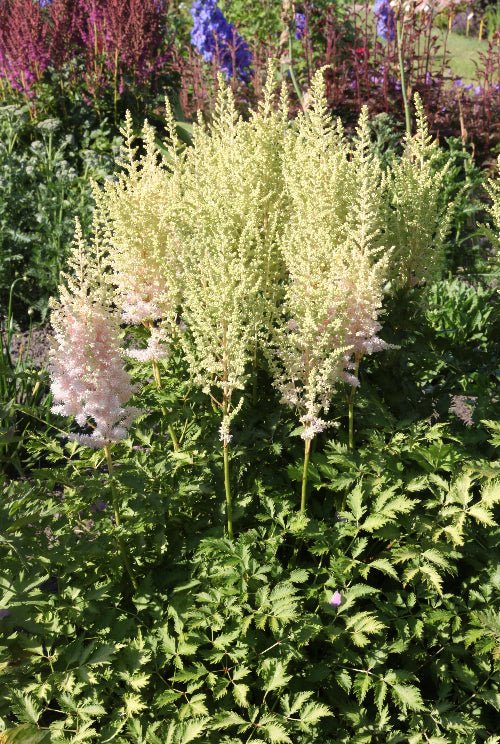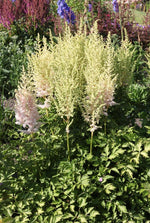
Milk and Honey
649
About Milk and Honey
Astilbe Milk and Honey is a stunning perennial that adds elegance to any garden with its soft, creamy-white blooms. Known for its graceful appearance and long-lasting flowers, it’s perfect for shady spots and creates a beautiful contrast with darker foliage. With a delicate fragrance and a strong presence, this plant is sure to become the centerpiece of your garden.
- Creamy-white blooms: soft, elegant flowers that last throughout the summer.
- Ideal for shade: thrives in partial to full shade, perfect for low-light areas.
- Low maintenance: easy to grow and care for, making it a great choice for beginner gardeners.
- Deer resistant: keeps your garden safe from pesky deer.
- Attracts pollinators: bees and butterflies love the sweet fragrance, enhancing your garden's ecosystem.
How to plant and take care of Astilbe Milk and Honey:
- Planting location: choose a spot with partial to full shade. Astilbes do best in cool, moist environments.
- Soil: plant in well-drained, rich, and slightly acidic soil for optimal growth.
- Spacing: space plants 18-24 inches apart to allow for full growth.
- Watering: keep the soil consistently moist, especially in hot weather, but avoid waterlogging.
- Mulch: apply mulch around the base to retain moisture and keep the roots cool.
- Fertilization: fertilize with a balanced fertilizer in early spring for healthy growth and blooms.
FAQs

